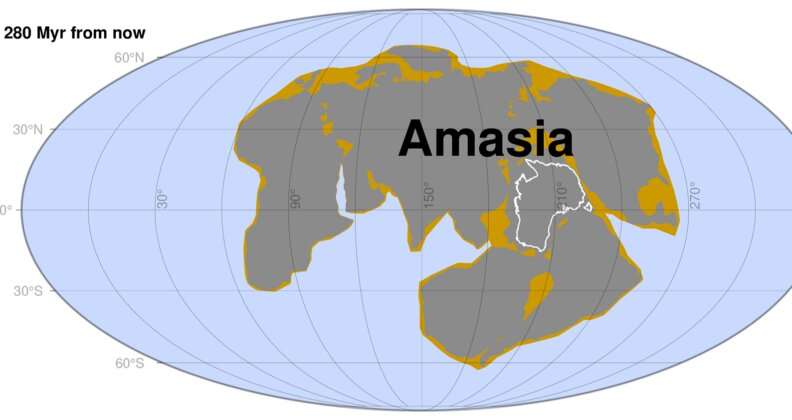From PhysOrg, September 30:

A possible Amasia configuration 280 Myr into the future. Credit: Curtin University
New Curtin University-led research has found that the world's next supercontinent, Amasia, will most likely form when the Pacific Ocean closes in 200 to 300 million years.
Published in National Science Review, the research team used a supercomputer to simulate how a supercontinent forms and found that because the Earth has been cooling for billions of years, the thickness and strength of the plates under the oceans reduce with time, making it difficult for the next supercontinent to assemble by closing the "young" oceans, such as the Atlantic or Indian oceans.
Lead author Dr. Chuan Huang, from Curtin's Earth Dynamics Research Group and the School of Earth and Planetary Sciences, said the new findings were significant and provided insights into what would happen to Earth in the next 200 million years.
"Over the past 2 billion years, Earth's continents have collided together to form a supercontinent every 600 million years, known as the supercontinent cycle. This means that the current continents are due to come together again in a couple of hundred of million years' time," Dr. Huang said.
"The resulting new supercontinent has already been named Amasia because some believe that the Pacific Ocean will close (as opposed to the Atlantic and Indian oceans) when America collides with Asia. Australia is also expected to play a role in this important Earth event, first colliding with Asia and then connecting America and Asia once the Pacific Ocean closes....
....MUCH MORE